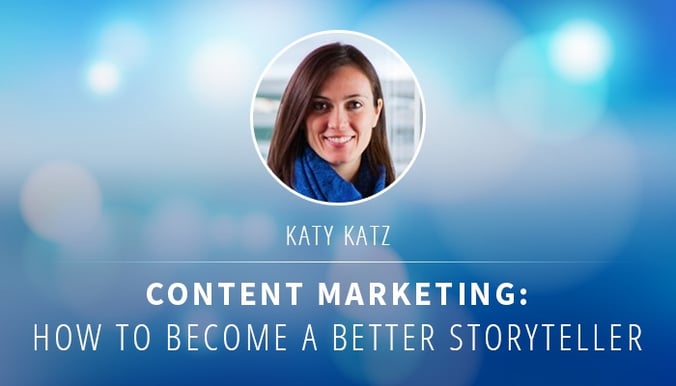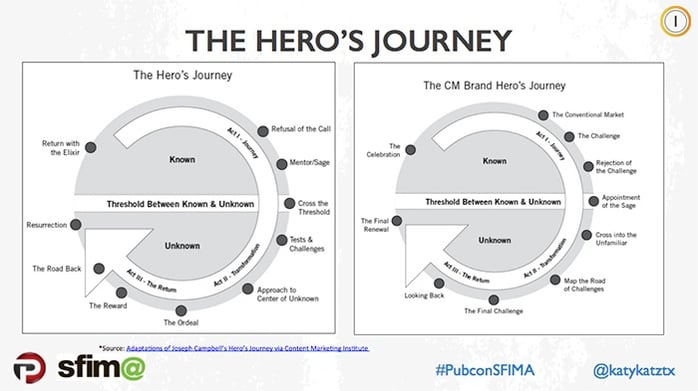
This is my son, Avi. He’s four and he loves superheroes. I took him to his friends birthday party a few weeks ago. It was a tumbling party at a gymnasium. And rumble, tumble, play is very exciting for four-year-olds.

We arrived a few minutes early and the kids were already lined up. Their muscles were twitching in anticipation as they waited to enter the gym and there were still three minutes to go - a lifetime for a young kid (AND their parents!). Then the instructor turned to my son and said, “Avi, how about you tell us a story?”
My son tells great stories. He tells them at dinner, on the toilet, in the car - any chance he can get, really. They usually involve a conflict between iron man and the hulk and end up with someone bonking their heads and dying (did I mention he’s four?).
But they’re always different. And always end up making people stop, listen, and smile. And an amazing thing happened with this horde of twitching four-year-olds that was itching to get on the mat. They stopped and listened, too.
Believe it or not, your audience is not much different than a four-year-old. It’s often been said that you have 30 seconds to make a first impression. In the digital world, it’s as little as five seconds. You have to delight their interest right from the beginning if you want to have any hope of keeping them to the end - which is what we as marketers do, right?
Is Storytelling Important to Marketing?
There are many ways to capture interest. I’m not advocating that you have to start off every piece of content with a story. In some cases a strong statistic, equation, or quote is enough to do the job. Humans, however, are hardwired to listen to and learn from stories. We’ve been doing it since we were kids; and storytellers have been using their techniques for millennia to drive home their point.
And guess what - you don’t have to be a classically trained writer to do it! I’m not. I have a bachelor’s degree in art history and an MBA in marketing - not exactly English Lit. But I’ve done a fair amount of research on this and distilled storytelling down to a few logical steps that you can follow to make a bigger impact with your content.
Storytelling works because:
- It’s human nature to listen to stories
- Stories make information tangible
- Stories forge connections in the brain
- And stories build memories
Building memories is the key because people forget 90% of what you say. Storytelling offsets that attention loss by turning on more parts of the brain. So here’s how to do it well.
1. Know Your Personas
Knowing your personas is the number one step in pretty much every digital marketing strategy that you can think of. Personas help you turn the abstract concept of your target market into someone you learn to know as well as a friend. They help you learn goals, pain points, values, and most of all, they help you get personal.
Storytelling is a personal process. Effective stories relate to your readers on a personal level so that they start picturing themselves in your story - which is critical - and we’ll cover in more detail coming up.
2. Find the Conflict
While we may try to avoid conflict in our own lives, it is a storyteller’s best friend. Conflict is a natural way to ignite emotion in the reader. The element of suspense requires a solution and so it draws your reader into the story and makes them an active participant. Guess what? Active participation is a new part of the brain - we’re creating memories now, people!
The conflict in a story is what keeps your audience hooked. ![]()
3. Create a Plotline
It’s impossible to write a story well without a plotline. There are a few tricks that creative writers use which we as humble marketers can hack.
A good rule of thumb for all types of content is to cover the following bases:
- WHO: The hero in the story establishes the human connection
- WHAT: The meat - be sure to include the external benefit to the reader
- WHY: Know your purpose - make sure the story ties to the CTA and the purpose
- HOW: Explanation of your story establishes trust
- PROOF: Include other perspectives so it’s not just your own words
The why is the most important and also can be the most tricky to get right. If you haven’t seen Simon Sinek’s amazing talk on “the why,” or if you have and it’s been a while, stop reading this and take 10 minutes to watch it.
Once you know your why, you can start communicating with your customers (not just talking at them) and you can build a story that drives to the right call to action.
But don’t forget - it’s about them, not you. Make sure that your content is always from a customer-centric perspective. This brings me to the second plotline tool which will help with your storytelling efforts: the Hero’s Journey.
The Hero’s Journey was developed by Joseph Campbell to codify what many believe to be the plotline that encompasses all stories. Use this journey to think about how to construct your story in a way that is entertaining and informative.

4. Something Old, Something New
One of the worst things you can do is tell a story that everyone has heard before. They will tune you out immediately and the whole purpose of your efforts will be lost. But what you can do is take something that is familiar and merge it with something new (like telling a story about a random kid and Iron Man, for example).
This method of combining the old with the new uses the concept of familiarity. It works because your brain is primed to pay attention to something that it recognizes and it takes less time to categorize that information.
The act of combining the familiar with a new input is a magic combination because it creates a state of “uncertainty.” Uncertainty is triggered when the brain sees something familiar combined with something unfamiliar. And, you guessed it, that’s another way people make memories.
5. Use Sensory Language
“People don’t remember what you say as much as see when you say it.”
- Patricia Fripp, Speech Coach
Sensory language is language that describes things your readers can see, hear, taste, feel, and smell. It’s the descriptive language that is the hallmark of a good writer. Sensory language will make your story more enjoyable because it creates a picture in their mind and gives your story depth.
6. Show, Don’t Tell
Showing the reader points of the story with details and dialogues is a trick used by TEDTalks speakers which was uncovered by Akash Karia in the book TED Talks Storytelling: 23 Storytelling Techniques from the Best TED Talks.
You can help the reader experience the story in a more memorable way by being specific, detailed, and concise. Another trick is to use narration or quotes that provide the evidence that we talked about before, but also create a more realistic picture of what happened.
“My life is over,” said Thelma, is much more impactful than - Thelma said her life is over.
7. The Moral is the CTA
Last, but certainly not least, the moral of your story should tie into your CTA. The story about my son ended with the children stopping and listening. Storytelling will help your readers stop and listen, too.
Repeat the theme of your CTA throughout your content and drive it home in the end just as you would with any well-structured piece of content. People will listen to you and remember your punchline, and of course, convert better with your brand.


